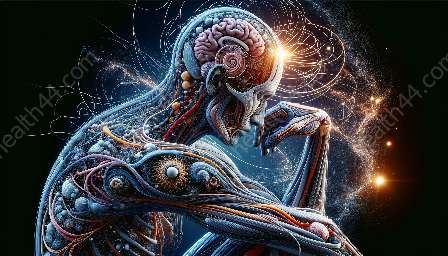The gastrointestinal (GI) system, also known as the digestive system, is a complex and essential system in the human body responsible for digestion and nutrient absorption. It is vital for maintaining overall health and well-being, making it an important topic in anatomy and medical training. In this comprehensive guide, we delve into the fascinating world of gastrointestinal anatomy, exploring its structure, function, and significance in health education.
Structure of the Gastrointestinal Tract
The gastrointestinal tract comprises the mouth, esophagus, stomach, small intestine, and large intestine. Each component plays a unique role in the digestion process, with specialized structures and tissues that facilitate the breakdown of food and absorption of nutrients.
Mouth and Esophagus
The digestive process begins with the oral cavity, where food is taken in and chewed. The salivary glands produce saliva, which contains enzymes that initiate the breakdown of carbohydrates. The chewed food then passes into the esophagus, a muscular tube that transports the food to the stomach through peristalsis, a wave-like contraction of muscles.
Stomach
Upon reaching the stomach, food is mixed with gastric juices containing hydrochloric acid and digestive enzymes. The stomach's muscular walls churn and mix the food to further break it down and create a semi-liquid substance known as chyme.
Small Intestine
The small intestine is the primary site for nutrient absorption. It consists of three segments: the duodenum, jejunum, and ileum. Each segment has specialized structures, such as villi and microvilli, which increase the surface area for absorption. Here, nutrients and minerals are absorbed into the bloodstream to provide essential energy and resources for the body.
Large Intestine
After the small intestine, undigested material moves into the large intestine, where water and electrolytes are reabsorbed to form feces. The large intestine also harbors beneficial gut bacteria, which contribute to the breakdown of certain substances and the synthesis of vitamins.
Accessory Digestive Organs
In addition to the gastrointestinal tract, several accessory organs are essential for digestion:
- Liver: Produces bile, which emulsifies fats for better digestion
- Gallbladder: Stores and releases bile into the small intestine
- Pancreas: Produces digestive enzymes and hormones, such as insulin and glucagon, which regulate blood sugar levels
Function of the Gastrointestinal System
The primary function of the gastrointestinal system is to break down food into its basic components, such as carbohydrates, proteins, and fats, and absorb these nutrients into the bloodstream for distribution throughout the body. It also plays a crucial role in the elimination of waste products.
Significance in Health Education and Medical Training
Understanding gastrointestinal anatomy is essential for medical professionals and students, as it forms the foundation for diagnosing and treating digestive disorders and diseases. Additionally, health education emphasizes the importance of maintaining a healthy digestive system through proper nutrition, hydration, and lifestyle choices.
Overall, gastrointestinal anatomy is a captivating and fundamental aspect of human biology, shaping our understanding of nourishment, metabolism, and overall well-being.


